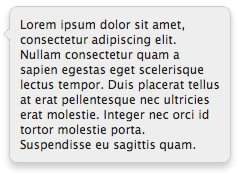Implement MooTools’ Elements.addEvent in jQuery
One thing that I've always disliked about the jQuery JavaScript framework is its syntax for adding event listeners to elements. The way to add a click event to an element using jQuery is:
$('#myElement').click(function() {
//do work
});
I love OOP so the above code tells me that a click is being triggered, not that it's going to add a listener to the element. There's nothing wrong with jQuery using that syntax; I simply don't prefer it. What I do when I need to work with jQuery is Moo-ify its syntax when I can. Here's how you can implement MooTools' "addEvent" syntax in MooTools.
The jQuery JavaScript
jQuery.fn.addEvent = jQuery.fn.bind; //updated
We add the "addEvent" function to the jQuery.fn object. Pretty simple.
The Usage
$(document).ready(function() {
$('#myElement').addEvent('click',function(){ alert('w00t'); });
});
Looks a lot like MooTools, no? If you like jQuery's syntax of .click() type events, read my post: Implementing jQuery-Like Event Syntax in MooTools





More concise :
jQuery.fn.addEvent = jQuery.fn.bind;
Well put Pierre…well put.
I too prefer verbs like el.setStyle v. el.css. But swapping syntax would totally goof me up!
I don’t get it, why not just use
$('#myelement').bind('click', function() {...});It’s even shorter than ‘addEvent’
I agree with Corey, $().bind is exactly what you’re looking for…
I would have to agree, this is nothing more than an alias.
Mysteriously enough in jQuery version 1.4 I get this:
$(“#website_stock”).addEvent is not a function
When I set it as just click(fn) it works in Firefox, but not in IE8. It doesn’t return any errors – just the functions do NOT run whatsoever. Same with the bind() option – works in FF on mac, not on IE8.
Hi David,
In this site, the two sides with name older and newer and toggle in-out,how to implement it please send me the complete demo with code if possible.
Thanks in advance